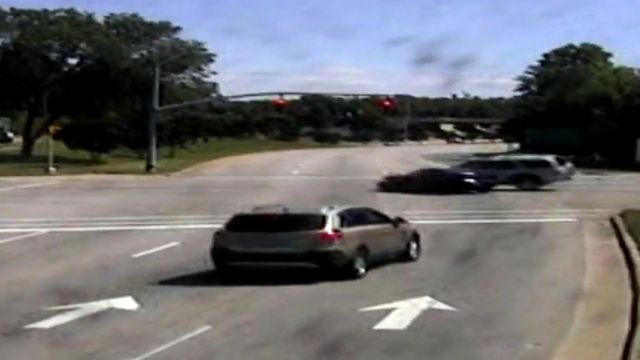Where are you most likely to be in a crash in the Triangle?
WRAL Investigates went through North Carolina Department of Transportation's raw data on crashes along state-owned roads and highlighted the areas where defensive driving should be top priority.
Posted — UpdatedOver the past 10 years, Wake County’s population has grown by 26 percent. During that same time, vehicle crashes in the county soared a whopping 45 percent.
WRAL Investigates went through North Carolina Department of Transportation’s raw data on crashes along state-owned roads and highlighted the areas where defensive driving should be top priority.
The most recent DOT data, reflecting crash numbers from 2014 to 2018, shows dozens interchanges and intersections in Raleigh that experienced at least 100 crashes during that period. High-volume roads like Capital Boulevard, Wake Forest Road and Western Boulevard inside the Interstate 440 Beltline are littered with high-crash-rate spots.
But it was highway interchanges that grabbed the top five spots where the crash frequency was high. No. 1 on the list was the Capital Boulevard interchange with I-440 in north Raleigh, with 484 crashes. The nearby I-440 interchange at Wake Forest Road was a close second, with 470 crashes. Interstate 40 at South Saunders Street in south Raleigh was third, followed by the I-440 interchange with New Bern Avenue in east Raleigh and the I-440 interchange with Glenwood Avenue, near Crabtree Valley Mall.
"All crashes are not created equal," said Jed Niffenegger, Raleigh's traffic engineer.
"You would expect high-volume intersections to have a lot of crashes," Niffenegger said. "We try to find locations where the crashes are severe."
The intersection at Corporation Parkway and New Hope Road in east Raleigh is tops on the city’s most dangerous list, followed by Dawson Street at South Street downtown and Falls of Neuse Road at Common Oaks Drive in north Raleigh.
When those intersections are identified, the city will look at all of the options to make it safer for drivers, Niffenegger said.
"We'll go out, do field investigations, do crash diagrams to look for patterns, look for issues that might be causing it because, a lot of times, it’s human behavior," he said.
Raleigh crash mitigation efforts include more visible stop lights, restricting turn lanes and, when it comes to areas with a high number of T-bone crashes, red light cameras have a huge impact.
When it comes to simple crash frequency, however, the intersection of Blue Ridge Road and Glenwood Avenue at Crabtree Valley Mall had more crashes than every other non-interstate interchange – 330 between 2014 and 2018.
Drivers said they’re not surprised. Prentice Herring said she experienced a close call there a couple of weeks ago.
"I turned right there at that intersection, and there was a dangerous move by a driver that could have been an accident," Herring said. "[He] cut across traffic without any warning.”
The most crash-prone intersection in Durham was I-40 at Fayetteville Road, followed by I-40 at N.C. Highway 55 and Interstate 85 and Guess Road.
In Fayetteville, U.S. Highway 401 at Morganton Road grabbed the top spot, followed by the intersection of Skibo and Raeford roads and South Reilly and Cliffdale roads.
• Credits
Copyright 2024 by Capitol Broadcasting Company. All rights reserved. This material may not be published, broadcast, rewritten or redistributed.






